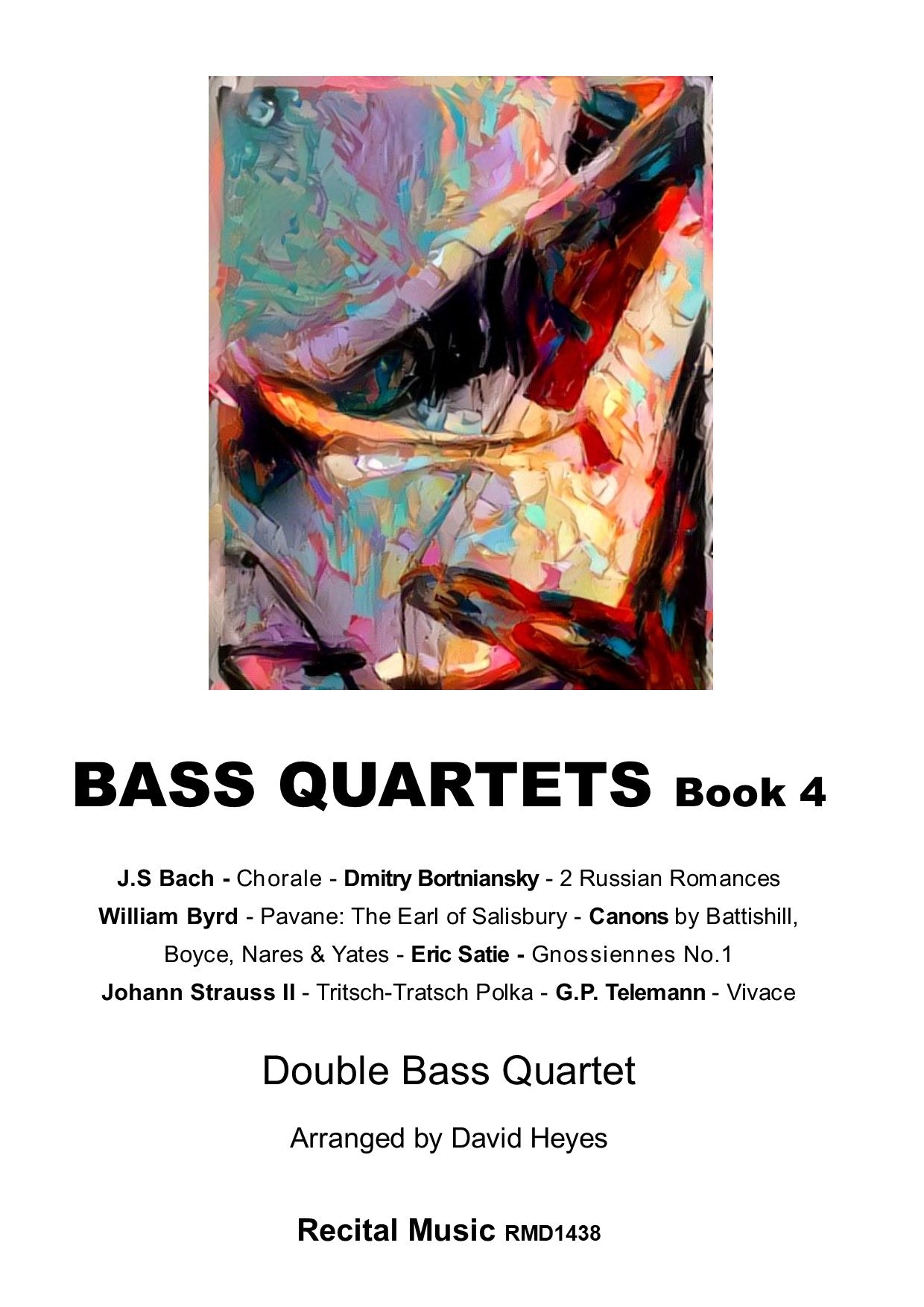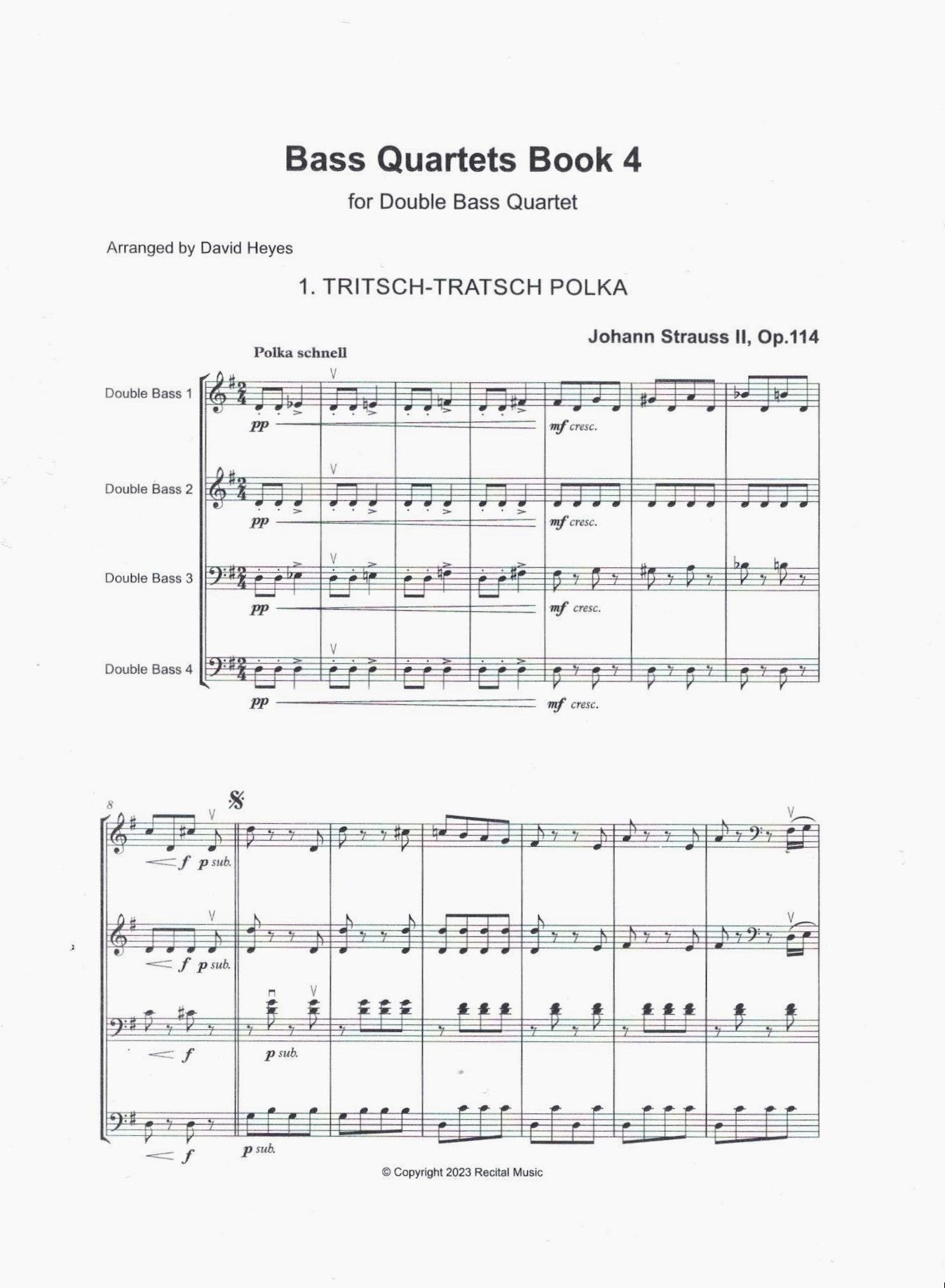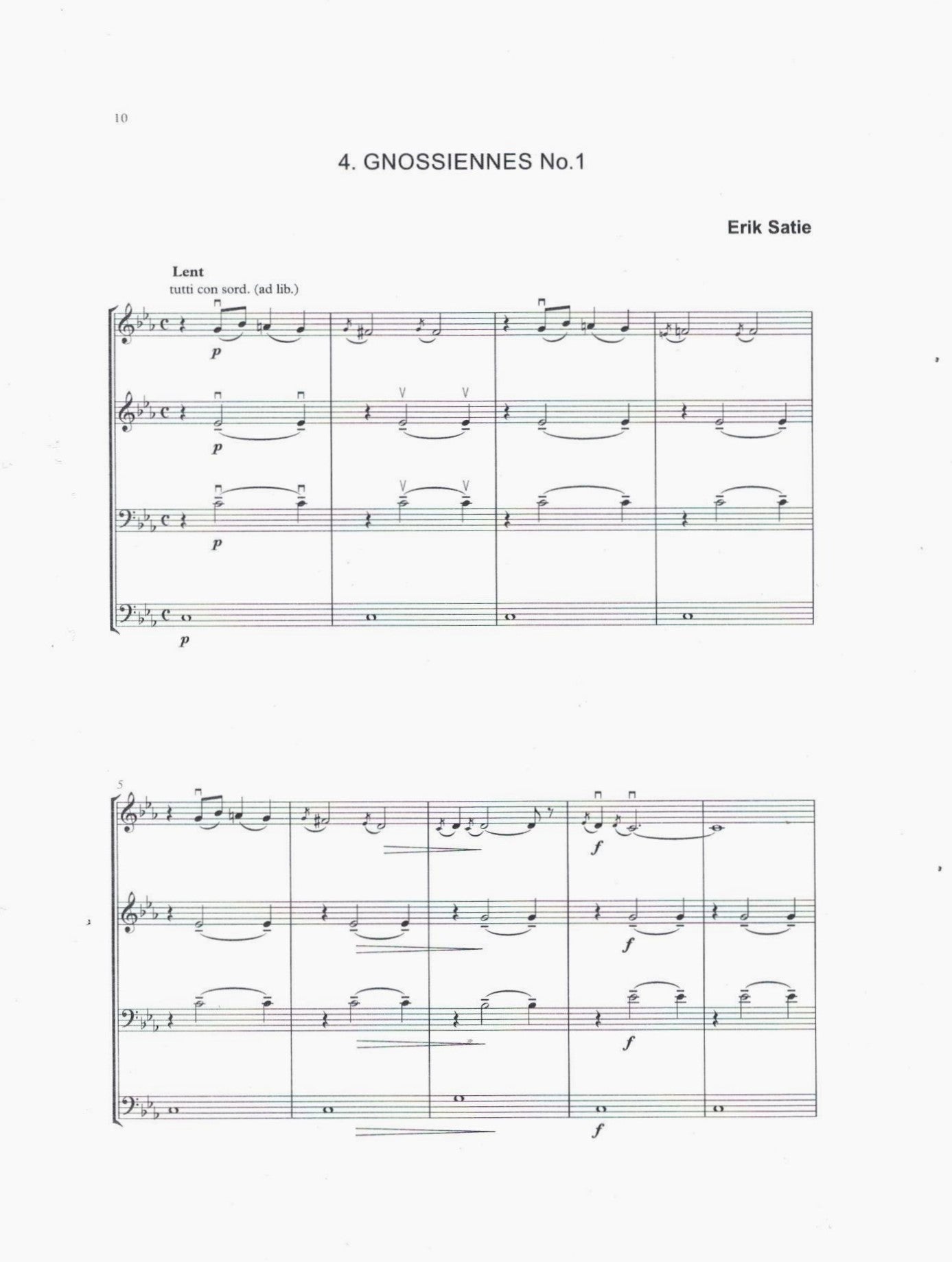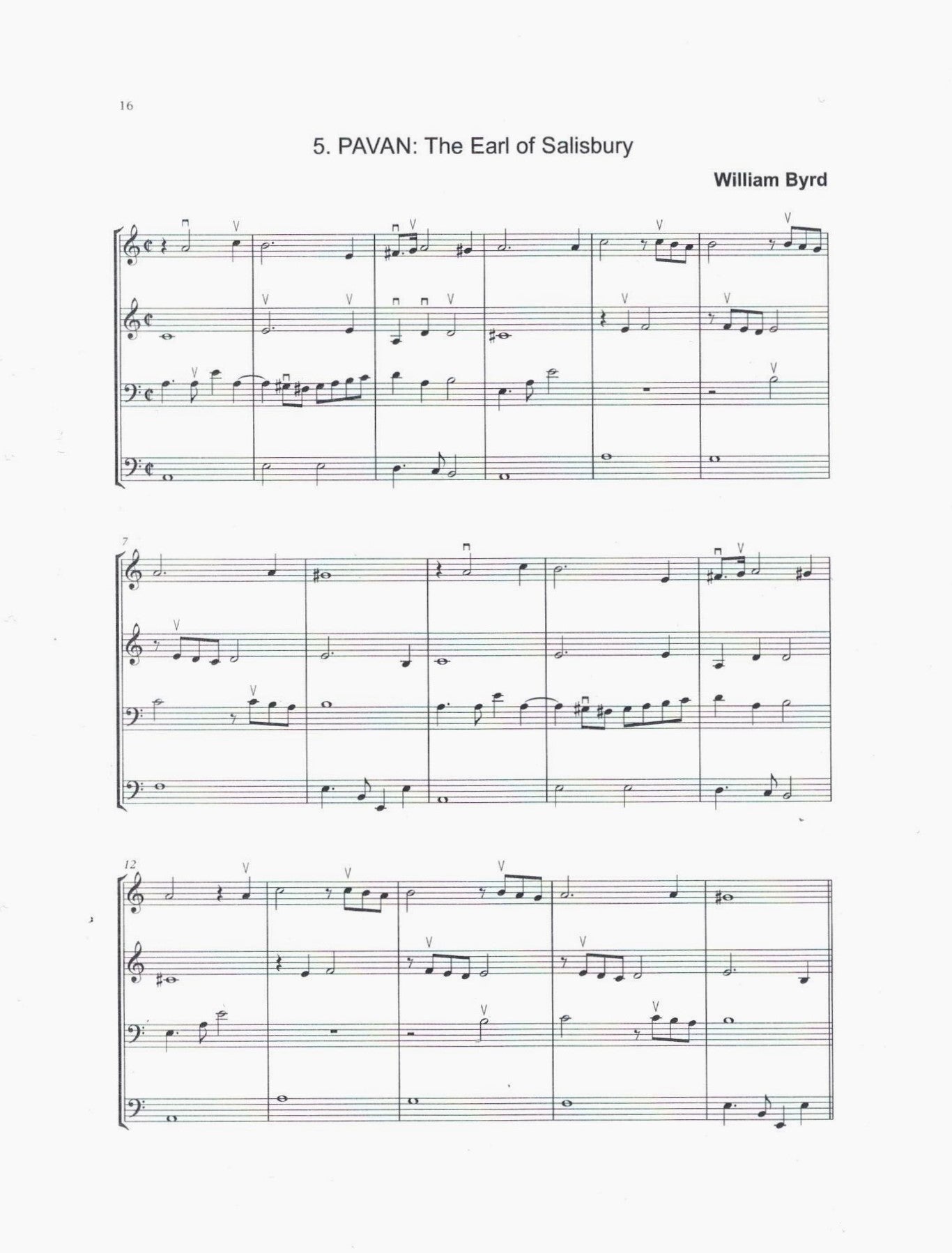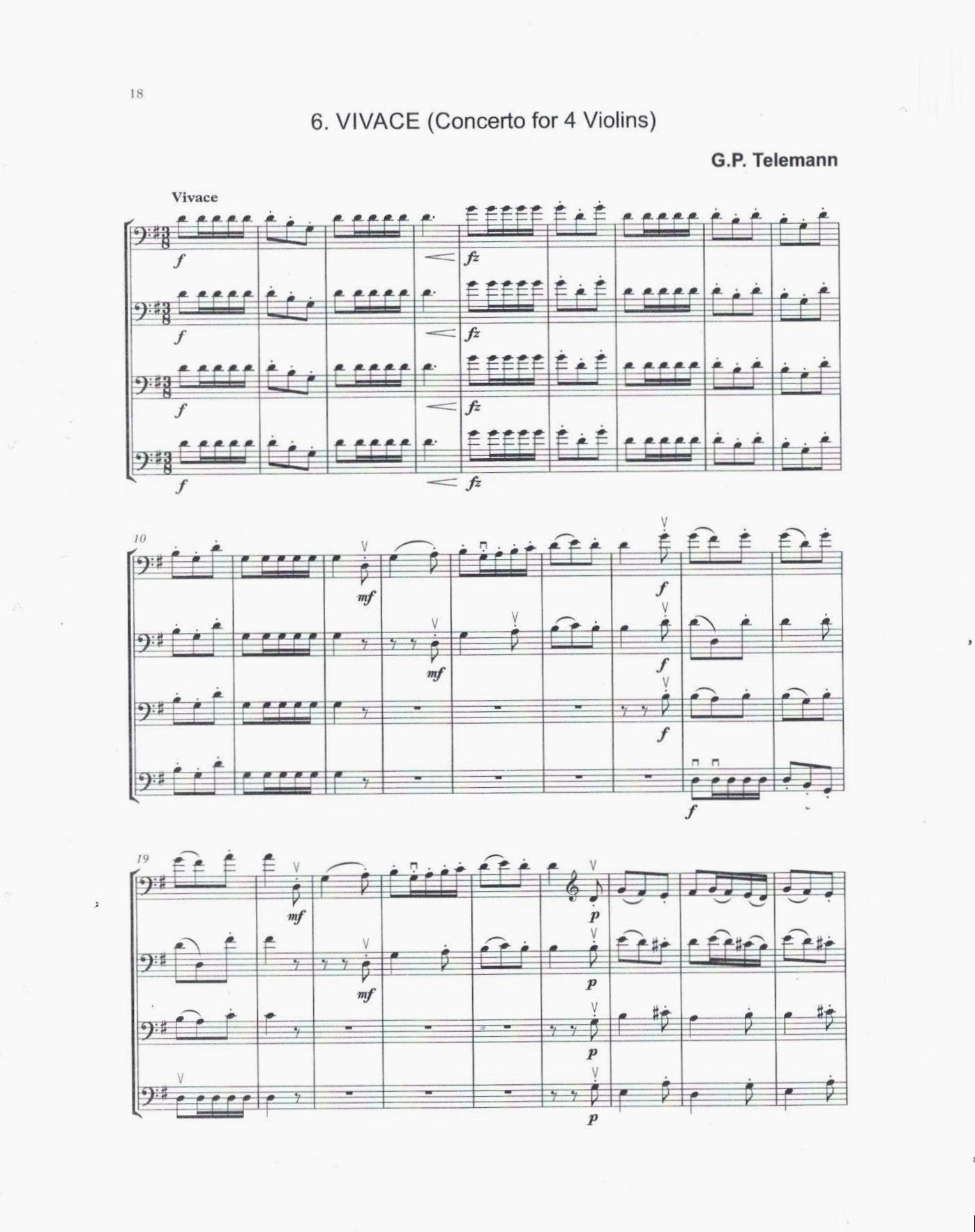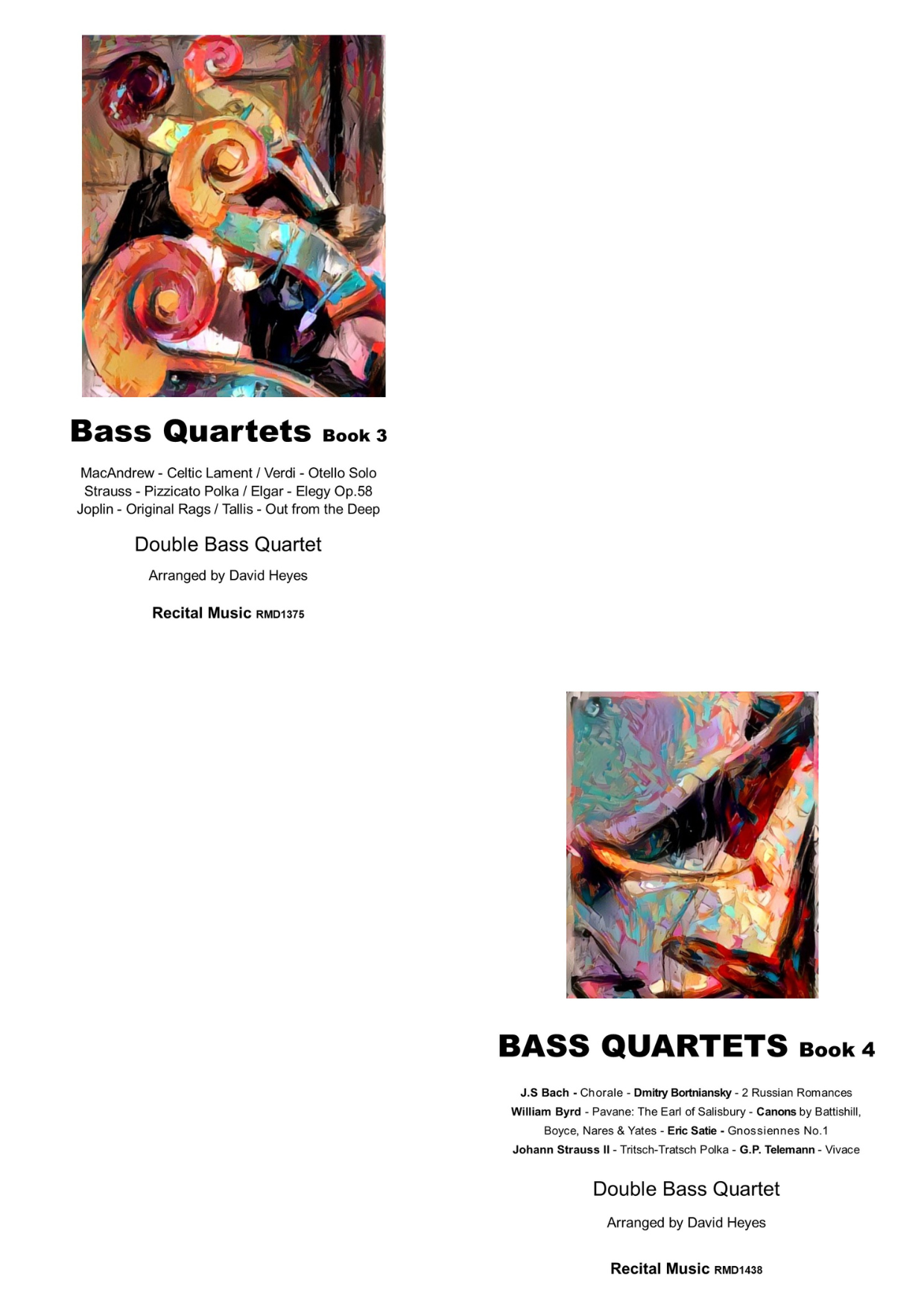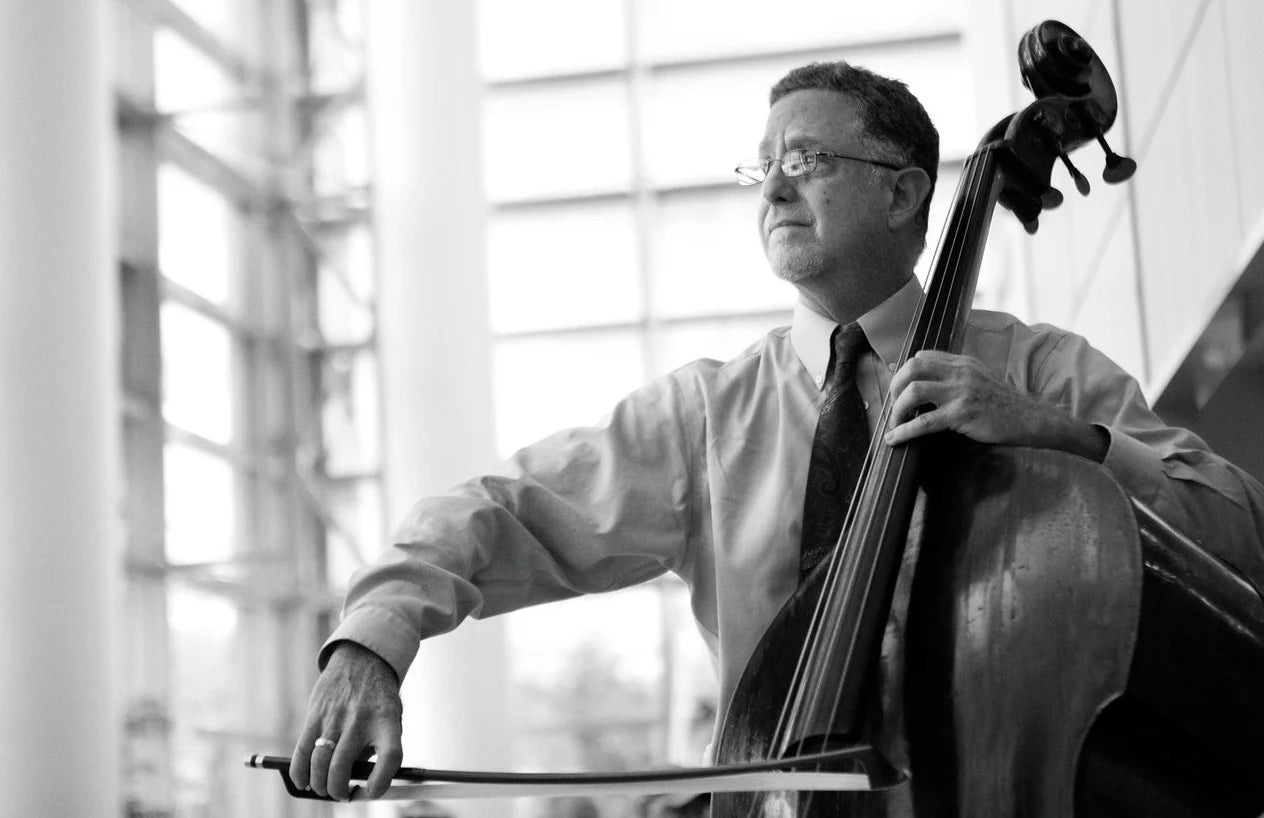David Heyes
Bass Quartets Book 4: 12 Pieces for double bass quartet (arr. David Heyes)
Bass Quartets Book 4: 12 Pieces for double bass quartet (arr. David Heyes)
Couldn't load pickup availability
About the Collection
Bass Quartets Book 4 is a collection of twelve inventive and accessible transcriptions from the 16th-20th century which lend themselves beautifully to the bass quartet medium.
There are a few musical and technical challenges, alongside opportunities to play wonderfully inspiring music in concert or at home with friends. Bowings and dynamics can easily be adapted or amended to add further variety and interest to each.
Most of the pieces have been successfully performed at Bass-Fest and other workshops and concerts, often played by massed forces.
The edition includes a score and four solo parts.
Table of Contents
1. Johann Strauss II (1825-1899) - Tritsch-Tratsch Polka Op.114
Johann Strauss II was known as the ‘Waltz King’ and composed over 500 waltzes, polkas and quadrilles alongside many popular operettas. Tritsch-Tratsch-Polka was composed in 1858 and Tritsch-Tratsch (chit-chat) refers to the Viennese passion for gossip. The polka is fun and fast-paced and ideally suitable to the bass quartet medium.
"Meant to be played at a blistering tempo, performers must have good off-the-string bow technique, be able to handle fast sixteenth runs, and occasional double-stops...very exciting and would make a great encore." (ISB)
"Get those basses out and have fun!" (ESTA News & Views)
2. J.S. Bach (1685-1750) - Chorale Chorales by J.S. Bach were probably first arranged for double bass quartet by Frederick Zimmermann (1906-1967) who, alongside his duties as Principal Bass of the New York Philharmonic, was a noted teacher and arranger of music for the double bass. This chorale, from Bach’s Christmas Oratorio, was arranged by David Heyes in the 1980s for his own students and a series of workshops, and has been successfully performed many times by massed basses.
3. Dmitry Bortniansky (1751-1825) - Russian Romance No.1 (Gebed) Bortniansky was a Russian composer, harpsichordist and conductor and served at the Imperial Court of Catherine the Great. He wrote operas and instrumental works but is particularly remembered for his liturgical music. Gebed was composed in 1822 for unaccompanied SATB choir and is known by a number of different titles. The music is generally chordal and slow moving enabling the players to emphasise the lyrical and sonorous quality of the double bass quartet.
4. Erik Satie (1866-1925) - Gnossiennes No.1 Erik Satie composed a vast body of work, with a distinctive soundworld and character, much of it neglected during his lifetime. Trois Gnossiennes, originally for piano, date from 1890 and have a simple, impressionistic quality. Slow, sustained and full of restrained elegance and style, there are a few challenges for bass 1 in treble clef, otherwise this is quite straightforward and accessible for the good intermediate bass quartet.
The three pieces are unbarred, suggesting a free and improvisatory feel, with a static and chromatic language set against simple and repetitive melodic motives or ideas. Transposed down a perfect 4th, into C minor and with the addition of bar lines for ease of performance, the bass quartet arrangement should retain a feeling of relaxed freedom with its chordal accompaniment contrasting a simple and effective melodic material.
5. William Byrd (1543-1623) - Pavan: The Earl of Salisbury William Byrd was regarded as one of the greatest English composers of the Renaissance. He was a prolific composer of vocal and instrumental music and his sacred and secular part-songs are performed by church choirs and vocal ensembles to this day. The Pavan, alongside an accompanying Galiardo, was first published in 1612/13 with chordal and contrapuntal melodies above an eight-bar ground bass. It has been arranged for many instrumental ensembles and the addition of dynamics and articulations will create a wonderful sound world for the bass quartet.
6. G.P. Telemann (1681-1767) - Vivace (Concerto in G major for 4 Violins) G.P. Telemann was a prolific Baroque German composer who wrote more than 3,000 instrumental, vocal, choral and instrumental works. Vivace is the fourth and final movement of his Concerto for 4 violins, one of four Concert1 à 4 Violini without continuo. The music is vibrant and exciting, with musical and technical challenges in equal measure, and this would be ideal as a fun and spirited encore.
7. Dmitry Bortniansky (1751-1825) - Russian Romance No.2 (Tebje Pajom) Bortniansky was a Russian composer and served at the Imperial Court of Catherine the Great. He wrote operas and instrumental works but is particularly remembered
for his liturgical music. Tebje Pajom is for unaccompanied SATB choir and would have been performed during church services. The chordal four-part writing transcribes beautifully for the bass quartet with the possibility of adding extra repeats and dynamics to create interest and contrast.
8. Thomas Warren (c.1730-1794) - Canon for 4 Voices
9. William Boyce - Canon: Long Live King George
10. James Nares (1715-1783) - Canon for 4 Voices
11. William Yates (? - 1769) - Canon for 4 Voices
12. Jonathan Battishill (1738-1801) - Canon: Sir Andrew Keeling
About Canons
Canons are a useful for both educational and concert use, enabling bassists to develop solo and ensemble skills in tandem. The five canons in this volume are taken from ‘A Collection of Canons, Catches & Glees for Three, Four, Five Six and Nine Voices - Selected by Thomas Warren.’
Thomas Warren was the founding Secretary of the Noblemen and Gentlemen's Catch Club and the volumes contain compositions that he selected and published from among entries in the Catch Club's prize competitions. Published between 1762-1793 and featuring 650 works by more than 100 composers, the 32 volumes are an amazing resource highlighting the popularity of canons, catches and glees in 18th-century music making.
Some pieces are short and straightforward, others far more detailed and challenging, but all are engaging and accessible. The books feature music by some of the leading composers of the day alongside many names who are now mostly forgotten.
The addition of dynamics and different articulations to the canons can help to create contrast and interest.
